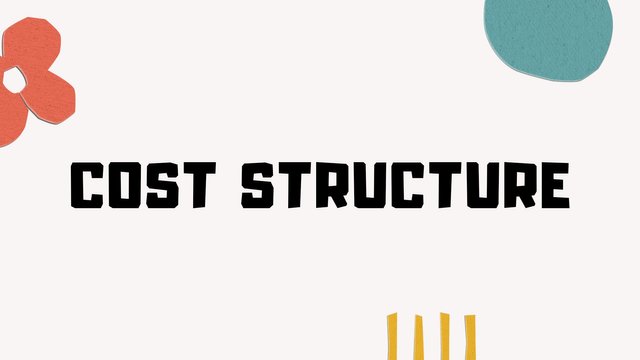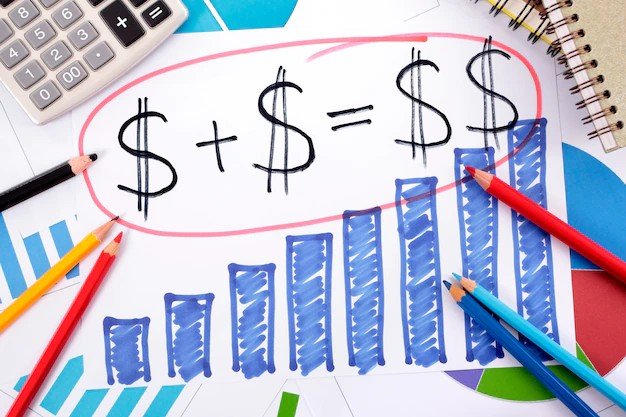SLC | S21W6 | Costs for entrepreneurs - Cost structure
Hello friends, it is nice making my final participation in the course teachings here. No doubt, cost has remained one vital element in entrepreneurship as strategic planning and management are effectively executed. Let's delve into cost structure...
 |
|---|
What is a cost structure, and what is its importance for entrepreneurship? |
|---|
| What is Cost Structure |
|---|
This is a framework that encapsulates all costs done within a business organization. This helps put the right cost analysis while delivering its goods. And services to the public domain. Just like we know about the different costs incurred while delivering our products, the cost structure is a framework that gives this direction.
With the cost structure in place, the business venture could easily track cost performance relative to the product. Earnings and how best to maximize both ends for efficiency. When we can ascertain cost behavior to production levels, then we can be sure we have an effective cost structure in place.
In deriving an effective cost structure, we need to know the vital components that make up this framework. The fixed and variable costs are vital components as they give holistic direction to an efficient cost structure framework. While the fixed cost maintains a statutory cost over a long-term period unchanged, the variable cost is known for the variations and changes as business demands. In some cases, we have the semi-variable costs that capture commissions and bonuses.
Examples of captured fixed costs in a cost-structure framework include Rent, Salaries, and Depreciation. While variable. Costs. Include; Raw materials and Utilities.
Therefore, a.cost structure framework is an. Enabler that allows.business owners.to effectively and efficiently manage both financial and human capital for purposes of maximizing efficiency. Key analyses are drawn from it to help make proactive decisions and ensure all-round-year business sustainability.
| Importance of Cost Structure |
|---|
Business Budgeting & Financial Planning
This is one vital importance of a cost structure. It provides the necessary information required for a budgeting period with clear estimations given, which improves the overall financial planning. The business venture.Pricing Strategy
This is the only way a business could manage its revenue. Product pricing is not done in isolation from the current realities on the ground but rather from the determination of the minimal pricing generated from the cost structure framework.Profiteering
When a business can determine the cost per product required in production, it allows for a clear profit margin.Investment Decision
A good knowledge of cost structure would help entrepreneurs know projects and investments to delve into. It clearly shows pricing versus ROI, relative to potentially viable buyers.Risk Management
This is one surest avenue to know investments that require short or long-term continuity. It helps navigate through hurdles of difficulties by letting entrepreneurs know how to evenly distribute resources.Other importance of cost structure include, managing operational efficiency, cash flow planning, Strategic decision-making, etc.
Provide business examples that use the explained cost structure methods; reason your answers.
The cost structure Method The fixed cost in the automobile industry comes relatively with a high cost. They include the cost of purchasing machinery and the e salaries of skilled workers. The variable cost in an automobile industry involves costs on raw materials, majorly from steel and plastic, and other utility costs during the period of production.
IVM is a major automobile company in Nigeria with fixed and variable costs associated with its production. The fixed costs are constant irrespective of the number of cars manufactured over a period. However, the variable costs are affected based on the number of car products as there are varying quantities of raw materials used. Knowing this, the company is expected to efficiently manage its production lines and inventories so as to optimize the use of these fixed assets.
The cost structure Method The fixed cost in the food and beverage industry comes relatively with costs that include rents or lease payments, permanent salaries of staffers, and equipment. The variable cost in a beverage and beverage industry involves costs on raw materials, packaging, and other utility costs during the period of production.
Cowebell has significant fixed costs, especially on its rents on retail locations and equipment. However, its variable costs are dependent on the volume of sales made. Cowebell can optimize its production by developing marketing strategies that best fit into its plans.
Elements of a cost structure are vital in the financial management of any business venture. A good knowledge helps profer strategic planning of the entire production line. Let's get to look at the elements below;
|
|---|


Greetings @xkool24
1.- You have presented the concept of cost structure and the importance of entrepreneurship, making it clear that it is a fundamental tool for the financial management of the company.
2.- You have shared in an acceptable manner the examples of businesses that fit the cost structure methods.
3.- You have mentioned the elements of the cost structure, deepening the information with an acceptable explanation.
4.- You have developed in an acceptable manner, and using an explanatory table of the proposed exercise.
Thanks for joining the contest
You've got a free upvote from witness fuli.
Peace & Love!
This post of yours can be an important guideline for entrepreneurs. Thanks for sharing your experience.